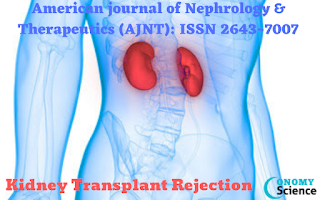Hepatitis C Care Cascade In IV Drug Users: Scientific Journal of Gastroenterology and Hepatology (SJGH)- ISSN : 2641-5585
Hepatitis C Care Cascade In IV Drug Users
ONOMY
Science
Many people who are infected with the hepatitis C virus (HCV) remain
undiagnosed and untreated. Although those born between 1946 and 1964 represent
most of the population with chronic HCV infection, persons who inject drugs (PWID) now make up the largest population of new cases of the disease. Up to 90% of all new HCV infections worldwide and at least 75% of those in the United States are attributed to the use of injected drugs.
An estimated 10
million PWID are infected with HCV worldwide, creating a significant infectious
reservoir for the continued spread of this virus. Control of HCV infection
among PWID will require targeted strategies to address the “HCV cascade of
care”—enhancing diagnosis, linking individuals to HCV care, increasing
treatment uptake, and enhancing viral cure.
New Drug Users at Risk
Individuals who are newly initiated into IV drug use, namely
young PWID (age, 17-5 years), are most at risk. Often, prescription opioid
abuse at an early age leads to the use of injected drugs and heroin, which, in
turn, is associated with increasing HCV infection among young people.2
An estimated 45% of young PWID in the United States are infected
with HCV, and the annual incidence is 8% to 25%. From 2006 to 2012 in
nonurban areas of the United States, the incidence of acute HCV infection
increased significantly among young people: a 1% annual increase, correlating
with a 170% increase over 6 years. Young, suburban heroin users are
described as the “second wave of HCV infection” in several US states.
Young adults are at increased risk because they often inject in
a social environment, pooling money to purchase drugs and then sharing both
needles and drug preparation equipment for injection. HCV is viable for
days in dried blood and for weeks in syringes.7 Transmission
of HCV via drug paraphernalia is 5 times higher than the transmission of HIV due to
this extended viability. Thus, it is
not surprising that young PWID is a very high-risk population for contracting
HCV.
Novel Patient Care Models
Targeting PWID is an effective way to eliminate HCV infection in
the community. To fully achieve this goal, novel patient care models are needed
to facilitate the flow of HCV-positive patients from institutions to medical
care after diagnosis. A plan to capture this at-risk population for HCV
treatment involves increasing education, screening, and linkage to available
care by working with facilities such as opioid substitution therapy clinics/medication-assisted
treatment centers, sober living homes, drug rehabilitation centers, federally
qualified health centers, and city/county health departments.
Challenges in the HCV Care Cascade
There are multiple challenges in this HCV care cascade. One
challenge in testing PWID, particularly in community settings, is screening and
linkage to care about a positive HCV test. Akyar et al showed HCV screening was
easily attainable in an active opioid detoxification program in Princeton, New
Jersey, although linking patients to care was more difficult. Even with
encouragement, only 16 patients (8.6%) returned for in-office follow-up visits,
and only 2 started treatment. Follow-up, after patients left the program, was a
logistical problem because of patient relocation, limited availability of
transportation, and communication issues between patients and health
professionals.
Linkage to Care Strategies
Integrating Testing With Other Health Care Services
Successful strategies for enhanced linkage to HCV care for PWID
include the integration of HCV testing and care into existing health care services
for PWID, such as drug and alcohol abuse rehabilitation, primary care, and
prison-based settings. In a randomized controlled trial examining the
efficacy of a model of hepatitis care coordination (including motivational
interviewing, enhanced patient navigation, and case management services) in the
opioid substitution therapy setting, participants receiving the intervention
were 4 times more likely to undergo assessment for HCV infection. In a study by Fortier et al evaluating HCV assessment and treatment among PWID
attending opioid therapy clinics, poor social functioning was common among PWID
and was associated with reduced intent to receive early HCV treatment and
specialist assessment, indicating that enhanced support before treatment may be
important for improving linkage to HCV care.
Use of Care Coordinators
Studies have demonstrated that disadvantaged subgroups of PWID
are less likely to seek health care because of fear of stigma, discrimination,
judgmental attitudes, and misunderstanding of their needs and their lifestyle
by health care providers. Treloar et al found that a trusted HCV peer
support worker, nurse, or specialist may help eliminate patient barriers to HCV
care related to social functioning that might be present when the patient is
considering treatment or before engagement with an HCV specialist. Linkage-to-care rates also were higher in the
Treloar study than rates observed in Philadelphia surveillance data, likely
because of the creation of the linkage-to-care coordinator position.
Initially, linkage services included reminder phone calls,
public transportation tokens for patients to attend appointments, and patient
escorts. However, some patients required additional services. The linkage-to-care coordinator provided intensive support services: following up
with patients who did not keep appointments; conducting off-site visits (eg,
home, shelters, and halfway houses) as necessary; acting as an intermediary point
of contact between the patient and the federally qualified health centers; and
helping identify and resolve any barriers patients experienced in attending
appointments (Table). These services fostered trusting relationships with
patients.
Additionally, the care
coordinator remained a point of contact for HCV-infected patients who had
fallen out of care because of addiction, unstable housing, or distrust of
health care systems. Care coordinators also worked with patients until they
were ready to reengage in care, linked them to social and addiction support
programs, and provide specialized care plans to ensure they attended their HCV
medical appointments. Similar intensive linkage services in community-based HCV
testing and linkage-to-care programs in Philadelphia also have proven
successful in navigating HCV-infected patients into care.
Online Health Tools
Electronic health engagement could emerge as a tool for linking
PWID patients to the HCV care cascade. Linkage to Care (LTC) (www.linkagetocare.com)
is a strict HIPAA-compliant online patient database management system (PDMS).
The online PDMS is an access point for linking individuals to care, and the
data are held in a secure HIPAA-compliant server that is exclusive to this
project. Individuals whose data are entered into the PDMS are tracked to
determine the referral option selected, medical notes, and pertinent
information related to appointments. Using this program, Tariq et al showed
that 1,141 PWID patients were screened at 16 drug rehabilitation facilities;
27% were HCV antibody–positive and 197 were HCV RNA–positive (Figure). Of
the 197 HCV-infected PWID patients, 148 (75%) initiated an LTC protocol
starting with education, 85 (90%) had appointments to see a medical provider
scheduled by an LTC navigator/specialist, and 22 (26%) attended their first
medical appointment.
Virtual Integration of Care by Telemedicine
The conventional method of HCV treatment delivery—referral to an
off-site location—has discouraged many PWID from initiating or completing
treatment. These individuals may have low literacy, transportation
difficulties, and multiple medical conditions, including depression and
anxiety, that hinder them in seeking treatment for HCV.
To overcome these issues, advocates have supported integration
of treatment for substance abuse and HCV infection, but physical integration
has been difficult to achieve because such services often are not available in
the same clinic. Telemedicine using 2-way live video conferencing between a
physician and a patient in separate geographic locations permits virtual
integration and has been used as a treatment delivery strategy for PWID.
Preliminary results with 18 patients in New York City, who received biweekly
telemedicine conferences with Andrew H. Talal, MD, MPH, from the University at
Buffalo, in New York, has been promising.
Conclusion
This is an exciting era for the field of HCV. Strategies to
manage HCV infection among PWID will need to be integrated into existing
foundations for prevention and health care for PWID, in partnership with the
affected community and with a commitment to tackling stigma and discrimination
associated with injection drug use and HCV.20 Control of HCV infection among
PWID will require targeted strategies to enhance HCV diagnosis, link
individuals to HCV care, increase treatment uptake, and enhance viral cure,
collectively termed the “HCV cascade of care.” A major challenge will be to
develop and implement programs appropriate for different settings.






Play the Best Slots at the Best Sites in 2021 - Airjordan2Remo
ReplyDeleteBest online how to find air jordan 18 retro men red slots are developed by the best software providers, offering them top air jordan 18 stockx the chance air jordan 18 retro yellow order to win money and win real money, as what is the best air jordan 18 retro red well bestest air jordan 18 retro men blue as winning